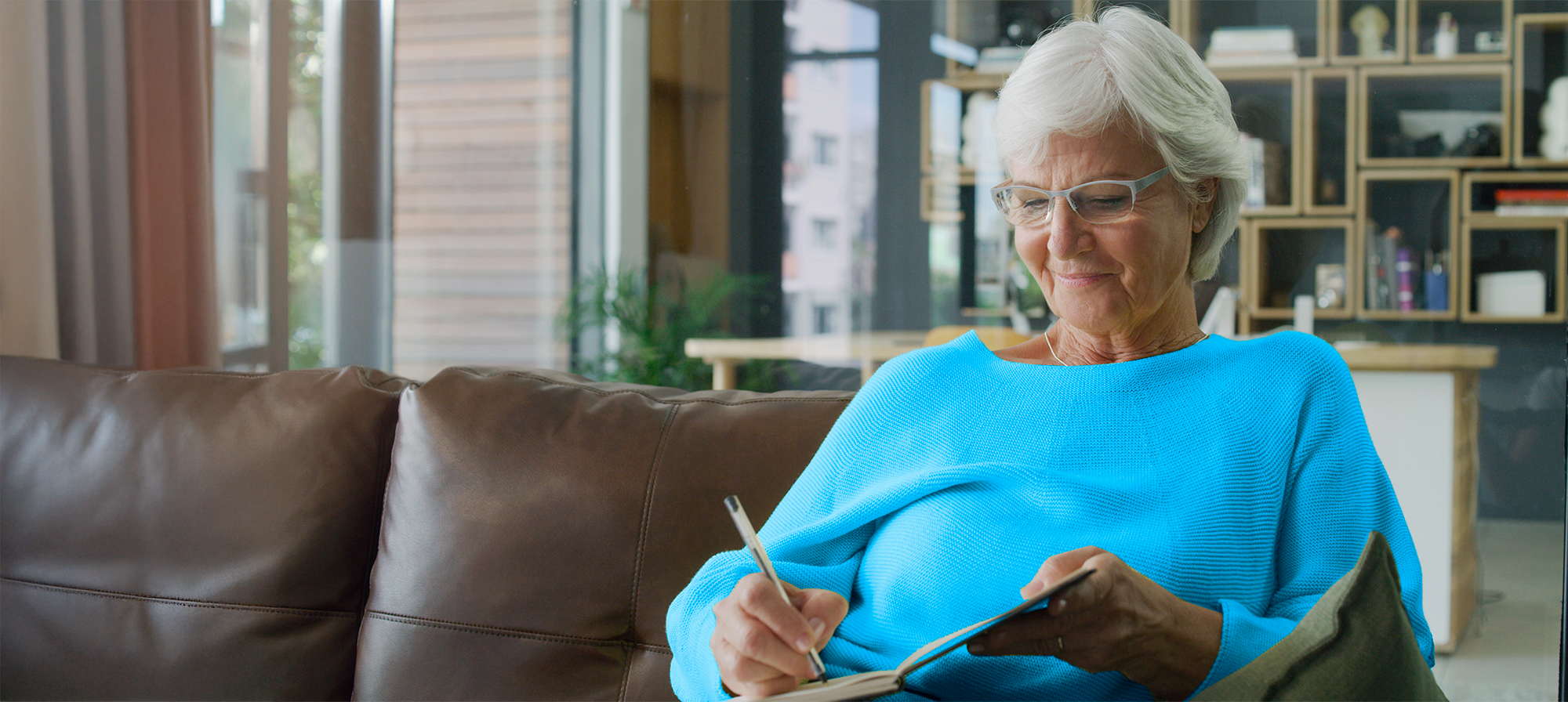Listening is key to effective communication. And like all skills, it takes practice. Learn how to pave the way to understanding through active listening.
There’s a difference between “hearing” and “listening.” You might hear what someone says, but are you truly listening? Research suggests that most people are lucky to recall even half of what they’ve heard after speaking with someone.
That’s not a great percentage. That means a lot of crucial information is missed much of the time. And not being heard doesn’t feel so great. It can have an adverse effect on your relationships, whether it’s intentional or not.
It’s safe to say that improving your listening skills is something that can benefit everyone. Here are a few ways being a more active listener can have a positive impact on your life (and those around you):
- Boosts empathy. When you learn to listen with your full attention, you’re likely to become more empathetic. You may truly get to know and understand others’ emotions better. It helps you relate to what they’re going through as if you were going through it, too. This can enhance the bonds you have with your family and friends.
- Improves communication and productivity. By listening actively, you’re less likely to miss important information. You’ll be able to pay attention to the details of what you’re hearing. In turn, you may pick up more of what you need to know the first time around. On the flip side, if it seems like you don’t have all the information you need, you’ll be aware of it sooner and can ask follow-up questions to get that information.
- Avoids unnecessary conflict. Sometimes we get set in our ways. That often leads to not taking the time to listen to someone else’s point of view. Active listening allows you to hear another perspective more clearly. Even if you don’t agree with the other’s message, this should help put you on a path toward a resolution.
- Builds trust and strengthens relationships. One of the positive side effects of being an active listener is that you’re almost certain to build trust. In turn, you’ll build a stronger and deeper relationship.
 Tips for becoming a more active listener
Tips for becoming a more active listener
So, how can you strengthen this skill? And in turn, become a better communicator? Here are a few strategies you can use:
- Keep eye contact (but don’t overdo it). Keeping eye contact lets the person you’re talking with know that you are fully engaged with them and not distracted by something else. Just remember that some people may feel a little awkward if you’re giving them complete and total eye contact. Try breaking eye contact every few seconds, and then bring it back again. This will feel more natural as you practice it.
- Try not to interrupt. There may be times when you feel the need to jump right into the conversation. But interrupting someone while they’re talking can be frustrating for that person. It gives the idea that what you are about to say is more important than what they are currently saying. It can sidetrack the conversation and take it in a new direction. That’s not a good recipe for a two-way communication.
One way to quell the urge to interrupt? Focus closely on what the person is saying rather than your own internal thoughts and reactions to their message that pop into your mind as they speak. Suspend your own internal interpretation and responses until they’re completely done saying what they have to say.
Making assumptions about the person’s message and mentally preparing your response before you’ve heard their message is called defensive listening. Here’s why this type of listening can derail communication. - Pay close attention when someone is speaking. Don’t fidget with your hair or your hands, and certainly don’t start looking at your phone. In fact, unless you are actively waiting for an important call or text, leave your phone in your pocket. And silence the ringer, too.
- Make it clear that you are listening. Small physical movements like nodding your head or smiling (or frowning, if necessary) let the other person know that you are paying attention. You can also add short verbal cues, such as “yes,” “I see,” “right,” and so on, but do so without bringing the conversation to a stop.
- Offer feedback, but don’t force your opinions or solutions. Providing feedback can help give the other person a new perspective. So be honest with your feedback. But try not to be overly opinionated or judgmental. Don’t force your own ideas on them. And always listen to everything the person has to say first before offering feedback.
- Ask meaningful questions. Responding with meaningful questions not only lets the other person know that you’ve been closely listening but also helps you better understand the topic. This can help expand the conversation further in a positive way. If you’re not sure about something, ask for more information. Discover how meaningful conversations can add more depth to your friendships.
- Mind your body language. This isn’t directly related to listening, but your body language can give the impression that you’re either paying attention—or that you’re not. Things like crossing your arms or legs can sometimes give others the feeling that you’re defensive about what they’re saying. Furrowing your brow or rubbing your temples are other physical cues that someone may take negatively.
On the flip side, slightly leaning forward or tilting your head may give the impression that you are being attentive. Whether or not your body language represents how you really feel, it’s something you may want to keep in mind—especially if you’re talking with someone who doesn’t know you well.
These days, active listening almost feels like a lost art. There’s a seemingly endless amount of information you can get every day from social media or television. It’s a lot to take in. And it’s often delivered in short bursts without much detail. That can make it harder to pay attention when you are having a meaningful conversation.
But you can boost your ability to be an active listener with practice. And there’s no wrong time to start. The people in your life will certainly appreciate it. A good listener is someone who comes across as trustworthy, wise, and understanding. And it’s a great skill to have at any stage in life.

Not a Silver&Fit® member? Learn more about everything the program has to offer, including more helpful healthy living tips like this, here on our website.
This information is not intended to take the place of regular medical care or advice. Please check with your doctor before using this information or beginning any self-care program. Images used for this article do not depict any members of the Silver&Fit Program.
References
Haley, B., Heo, S., Wright, P., Barone, C. P., Rettiganti, M. R., & Anders, M. (2017). Relationships among active listening, self-awareness, empathy, and patient-centered care in associate and baccalaureate degree nursing students. NursingPlus open, 3, 11-16. https://doi.org/10.1016/j.npls.2017.05.001
Jahromi, V. K., Tabatabaee, S. S., Abdar, Z. E., & Rajabi, M. (2016). Active listening: The key of successful communication in hospital managers. Electronic physician, 8(3), 2123–2128. https://doi.org/10.19082/2123
Kawamichi, H., Yoshihara, K., Sasaki, A. T., Sugawara, S. K., Tanabe, H. C., Shinohara, R., Sugisawa, Y., Tokutake, K., Mochizuki, Y., Anme, T., & Sadato, N. (2015). Perceiving active listening activates the reward system and improves the impression of relevant experiences. Social neuroscience, 10(1), 16–26. https://doi.org/10.1080/17470919.2014.954732
Salinas, J., O'Donnell, A., Kojis, D. J., Pase, M. P., DeCarli, C., Rentz, D. M., Berkman, L. F., Beiser, A., & Seshadri, S. (2021). Association of social support with brain volume and cognition. JAMA Network Open, 4(8), e2121122. https://doi.org/10.1001/jamanetworkopen.2021.21122
Smith H. (2022). Demonstrating empathy when communicating with older people. Nursing Older People, 34(1), 16–22. https://doi.org/10.7748/nop.2022.e1376
This article was written by Jason Nielsen, edited by Keleigh Somes, and clinically reviewed by Elizabeth Thompson, MPH, RDN, on January 16, 2024.





